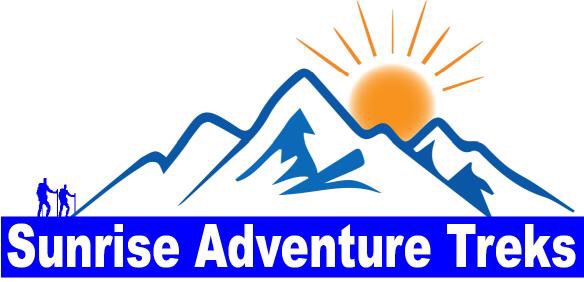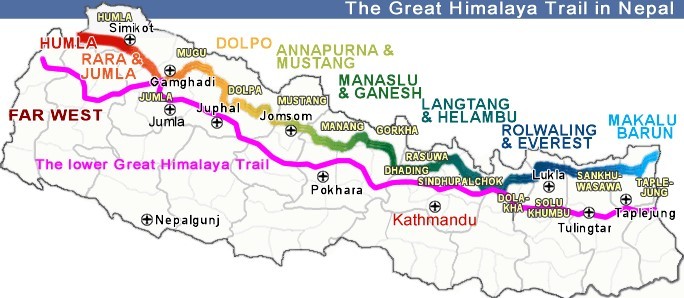At a Glance
Description
Highlights of the Great Himalayan Trails
- The Great Himalayan Trails low route – also called the cultural trek route winds through the country's mid-hills with an average altitude of 2000m. However, there are many passes to cross with the highest being the Jang La at 4519 m between Dhorpatan and Dolpa in West-Nepal.
- Trekking along the GHT low route means walking through beautiful lush forests, pastures, green rice terraces and fertile agricultural land, providing the basis for Nepal's rich culture and civilization.
- Explore different people and their cultures amazing landscape, Himalayas, flora and faunas of Nepal of Lower Great Himalayas trails. The GHT low route stretches over a distance of 1,500 km and the whole trek will roughly take around 90-100 days.
Itinerary
Inclusions
Airport pick up and departure and all ground transportation during trips.
Hotel in Kathmandu two or three star category in twin sharing bed with breakfast basis
Kathmandu sightseeing with city tour guide
Accommodation in lodge and full board meals during the trekking
Govt. trained guide and necessary no.of porters with their insurance, salary and meals
All fees for TIMS card and Trekking Permit
Domestic Flight according to Itinerary
Sleeping bag, Down jacket & necessary equipments during the trek
One cultural show and dinner program
Exclusions
International Flight ticket & your personal expenses
Major meals in cities cold & alcoholic drinks
Extra shower, battery re-charge, laundry charge etc.
Tips to guide and porter and your insurance
Frequently Asked Question
-
Trekking Group Size
We organize trekking in Dhaulagiri region for any number of people. If the group consists of more than 16 pax, we will split the group and arrange accordingly. We will assign one trek leader, one assistant leader for the group of four pax and porters (one porter between two members ) to carry members luggage. This arrangement ensures that the group can still go ahead as scheduled itinerary despite any member gets sick on the way in the trekking. -
Experience and Health Requirements
Upper Mustang trekking is considered a moderate trek suitable for those who can hike for 6 – 8 hours a day. Obviously hiking in the high altitude will not be so easy rather physically more demanding, however our itinerary is scheduled for the proper acclimatization while gradually gaining the altitude in the trekking. It will be advisable to have some walking and hiking or other outdoor activities for more than two weeks which will contribute to comfortable accomplishment in reaching Upper Mustang. No technical skills or use of crampons are required for this trekking. It is highly recommended for the trekkers to consult with the doctors before coming for this trekking. Trekkers who have asthma, allergy or any other diseases related to hurt, lungs should take more precaution for this trekking. -
Travel Insurance
Trekkers need to have traveling insurance which covers the comprehensive expenses that might incur due to medical issues or accidents (this includes air ambulance, helicopter rescue, and medical treatment costs). Insurance companies in Nepal do not provide travelling insurance for the foreigners and the trekkers need to get the travelling insurance from one of the international insurance companies. Sunrise Adventure Trek will have accident insurance for the trekking staff. -
Accommodations
Accommodation in Kathmandu will be arranged on twin sharing basis on BB plan except the extra cost for the single supplement (depending on the room availability ) according to the choice of the standard of the hotels before and after the trekking. Accommodation during the trekking will be arranged at standard teahouses/ lodges with unheated rooms with wooden beds and foam mattresses on twin sharing basis. The trekkers will have to share washing and toilet facilities. If the trekker is a solo traveler, he/she will have to share a room with the trekker of same sex. -
Meals
Trekkers are provided three meals a day (breakfast, lunch and dinner) during Upper Mustang trekking. They can enjoy wide variety of food from typical Nepali food, to all types of international cuisine. Unlike other trekking companies, Sunrise AdventureTrek allows trekkers to choose the food from the menu at the hotel / lodges in the trek. When the group is too big for the hotels/ lodges to provide individual dishes, set menu will be arranged in most places. We use the lodges / hotels which serve hygienic, nutritious and good food for the trekkers for them to get enough energy for the hiking. -
Acclimatization
Any trekker can get altitude sickness while trekking in the high altitude despite strong physically fitness. What is important is giving enough time for the proper acclimatization for the trekking. Sunrise Adventure Trek has planned the itinerary with gradual altitude gain giving enough time for acclimatization for the trekkers. Hiking slowly specially in the high altitude help prevent AMS ( Acute Mountain Sickness ). If anyone feels dizzy, suffer palpitation or severe headaches and loss of appetite, he / she will be moved to the lower altitude immediately or arrange the helicopter rescue in the severe case of AMS and the client has to pay for it. -
Equipment and Packing List
A variety of clothing is necessary for the Upper Mustang trek. While choosing the equipment trekkers need give emphasis on two simple aspects: Lightweight and Functional. The items should be lightweight, dependable, and adaptable to a variety of extreme weather conditions. The quality of the trekking equipment you choose has a lot to do with how warm, dry, and safe you will remain. For this reason you have to be critical of quality and the proper fit of clothing. -
Clothing and personal
- T – shirts - Hiking shorts - Undergarments - Full sleeves shirts - Long light weight cotton pants - Fleece or wool pants (seasonal) - Waterproof (preferably breathable fabric) shell pants. - Insulated pants / nylon windbreaker - Light and expedition weight thermal tops. - Fleece jacket or pullover - Waterproof shell jacket - Down jacket - Light warm fleece hat / woolen hat - Sun hat - Lightweight gloves. - Heavyweight gloves or mittens with a waterproof shell outer (seasonal). Foot Wear - Hiking boots - Light and comfortable camp shoes - Thin, lightweight inner socks. - Thick, warm wool hiking socks Accessories - Down Sleeping bag - Trekking bag / Duffle bag ( to carry for the porter ) - Day pack ( to carry with the trekkers to put the things required during the day time ) - Large plastic bags ( to keep items dry inside the trekking bag ) - Water bottle - Head lamp with spare bulb and batteries - Trekking poles - Personal medicine box - Sunglasses with UV protection. - Books, dairy, pen, walkman and any other game instruments Toiletries and Personal Hygiene - Quick drying small towel - Toothbrush / paste - Soap - Face and body moisturizer - Sun block for lips - Tissues / toilet rolls - Wet wipes - Feminine hygiene products - Anti bacterial hands wash -
Trek Leader(s) and Staff
All our trek leaders are well experienced who have led trekking in Dhaulagiri region for more than eight years. Their in-depth knowledge about culture, custom, the geological surroundings as well as their professionalism, sincerity, and their hospitality make your dream of successful trek a enjoyable, memorable event in your life. Although our trek leaders are not highly educated, they are well experienced, professionally trained and posses good leadership skills to operate the trip smoothly. Their smiling faces, loving and caring attitude will make your even a hard walking day a pleasant one. All trekking staff of Sunrise Adventure Trek are locally employed and have the adequate knowledge about culture, ecosystem, flora, fauna, geography, history and the safety measures in running the trips. Their attitude and the efforts will be always concentrated on the less impact of the trekkers to the local culture, custom, nature and the eco system. -
Porter Care
We are strongly committed to the porters rights. We make sure that they are well paid and have the proper clothing, foot ware and shelter. We are aware that no porter should be asked to carry a load that is too heavy for their physical abilities and the weight limit should be adjusted for altitude, weather and trail condition. We request our members not to have more than 15 kg weight of luggage to give to the porters. Porters who become sick while in the trekking are treated with high priority just like the other trekking staff or the members. If needed helicopter is sent and rescued in case of sever condition of sickness or accident. All porters are insured for sickness and accident. -
Season
Nepal, as a tourist destination is good for all seasons, however, the best seasons for trekking to Dhaulagiri region are Spring (March – May) and Autumn (mid Sept. – mid Dec. ). Trekking in autumn season is noted for clear weather and excellent views of silvery mountains against blue sky. It gets colder towards the end of December. This trek can be done in any month except January and February.
Related Trips
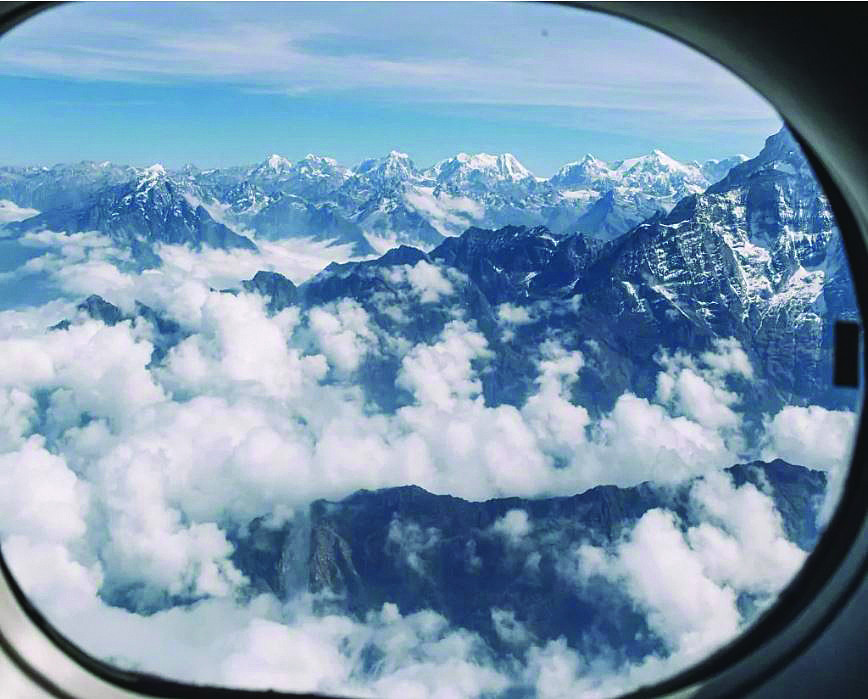
Everest Mountain flight
$220.00 / Per person
Everest Mountain Flight offers the luxurious option of a Himalaya experience. Anyone those who cannot...
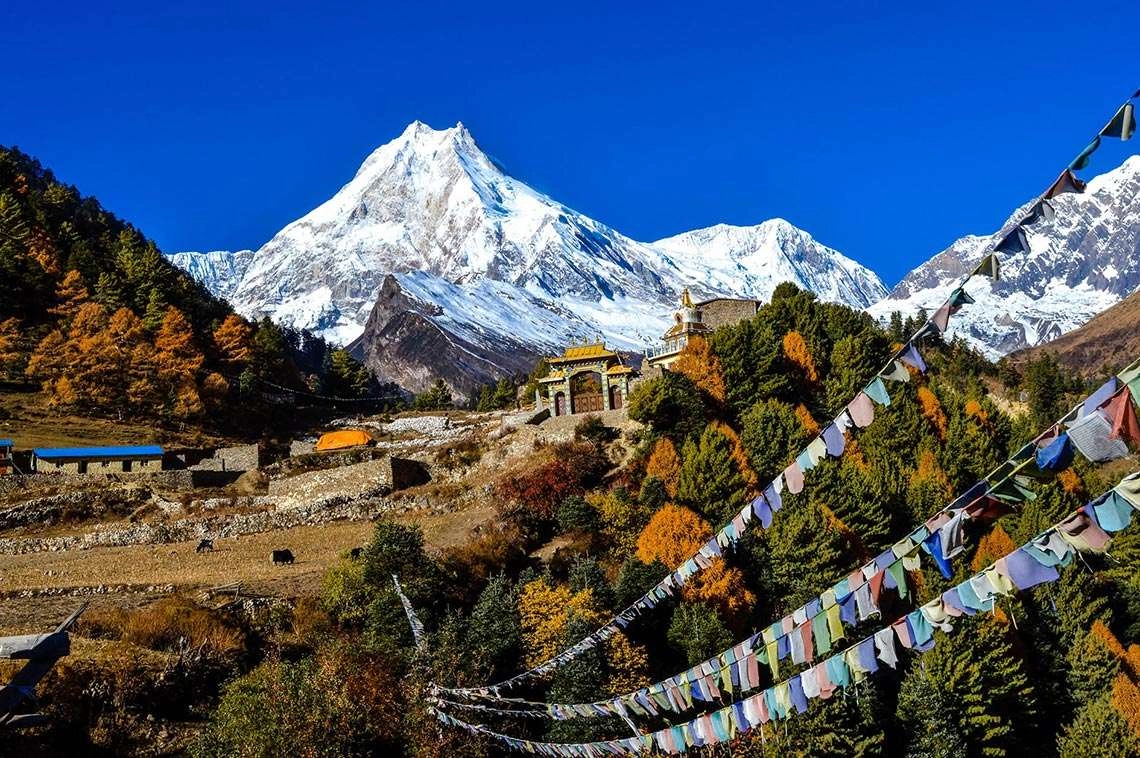
Round Manaslu Trek
$1,160.00 / Per person
Manaslu, is the eighth highest mountain in the world lies at 8156 meters above the sea level. Round M...
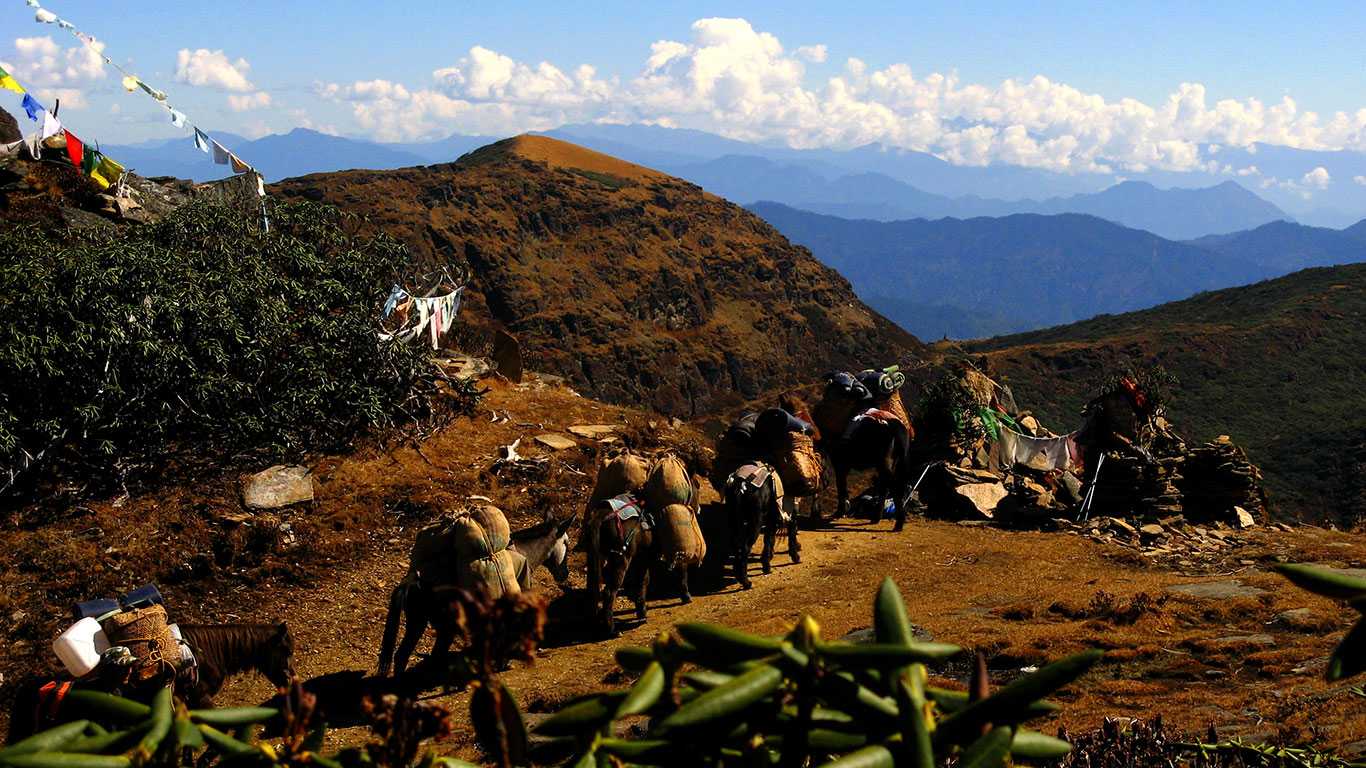
Bhutan Tour with Druk Path Tour/Trek
$2,240.00 / Per person
Tour to Bhutan, exploring various local Tibetan and Buddhist culture along with their different tradi...
